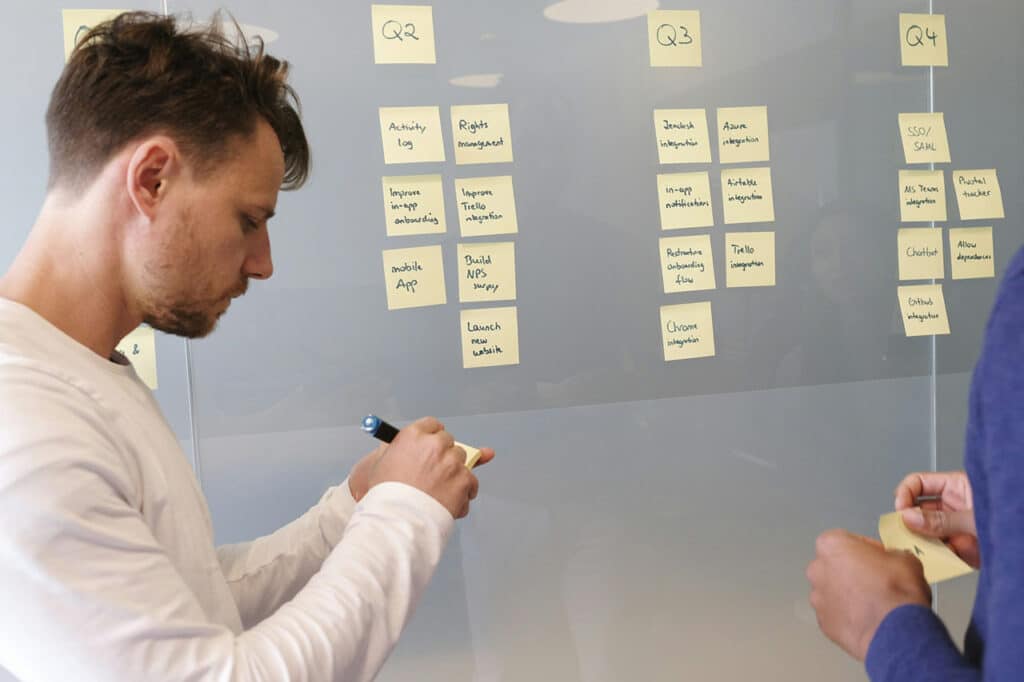What are agile working methods?
Agile working methods are based on the “Agile Manifesto” , which was formulated in 2001 by a group of software developers.
It emphasizes values such as collaboration, adaptability, functioning products, and customer focus.
Instead of a rigid plan, agile teams follow an iterative approach in which projects are implemented in short, manageable sections (sprints) and reviewed regularly.

The best-known agile methods include:
- Lean: The goal is to avoid waste and maximize customer value.
- Scrum: A structured method in which teams work in fixed roles (e.g., product owner, scrum master) and clear processes (daily stand-ups, sprint reviews).
- Kanban: Visualizes tasks on a board (e.g., “To Do,” “In Progress,” “Done”) and promotes continuous workflow.
- Design Thinking: Uses iterative processes for creative problem solving with a strong user focus.
They differ in their specific implementation, but share the basic idea that teams work in a self-organized manner and improve their processes and results through constant feedback.
Advantages of agile working methods
Agility brings numerous advantages:
- Flexibility: Teams can respond quickly to changing requirements, which is a major advantage, especially in dynamic industries.
- Customer focus: Regular feedback loops enable products to be tailored to user needs.
- Motivation and collaboration: Agile methods promote communication within the team and give employees more responsibility, which increases satisfaction.
- Early and continuous results: Iterative work means that functioning product parts are delivered early on, which minimizes risks.
The use of surveys in the agile process
Surveys are a valuable tool for obtaining continuous feedback in an agile context – whether from customers, users, or even within the team.
They enable you to quickly and specifically collect opinions, requests, and suggestions for improvement that can be directly incorporated into the next iterations.

This ensures that development does not fail to meet requirements and that satisfaction remains high among all parties involved.
Within the team, regular employee surveys, for example on morale or work processes (retrospectives), help to identify problems at an early stage and find solutions together.
Customer surveys can be used to check whether the product meets expectations and which features are particularly important.
Surveys are therefore an important part of keeping agility alive and making data-based decisions.
Areas of application
Originally originating in software development, agile methods are now also used in many other areas: marketing, human resources management, product development, and even administration.
Basically, all projects that need to be flexible and adaptable benefit from agile approaches.
Conclusion
Agile working methods have proven to be an effective means of meeting the demands of the modern working world.
Thanks to their flexibility and focus on teamwork and customer satisfaction, they enable projects to be implemented more quickly and effectively.
Surveys support this process by providing continuous feedback, making it easier to adapt to changing needs.
Companies that successfully integrate agile principles are often more innovative and better able to respond to change—a decisive competitive advantage in fast-paced times.



